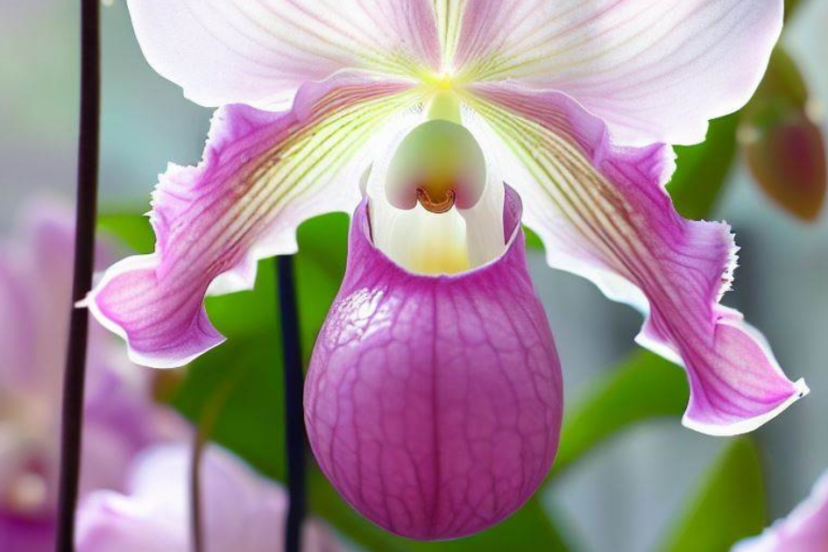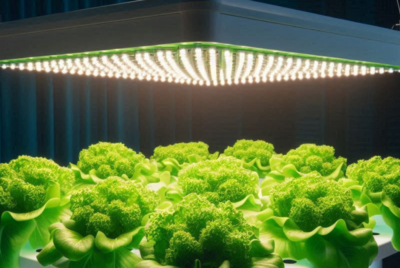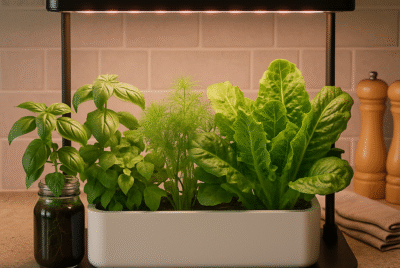The Magic of Hydroponic Orchids: Growing Exquisite Blooms
The Magic of Hydroponic Orchids: Growing Exquisite Blooms
I am thrilled to explore the captivating realm of hydroponic orchids. In this article, we will embark on a journey of discovery, understanding the benefits of hydroponic systems for orchid cultivation and uncovering valuable suggestions to enhance your orchid-growing endeavors.
Hydroponic Orchids :Selecting Orchid Varieties, Embracing Diversity
I’m excited to delve into the fascinating world of hydroponic orchids. These elegant and captivating plants have long been cherished for their exquisite blooms and delicate beauty. With the advent of hydroponic cultivation, orchid enthusiasts now have the opportunity to grow these botanical treasures in a controlled and efficient manner. In this article, I’ll guide you through the ins and outs of hydroponic orchid cultivation, providing helpful suggestions and reasons to embark on this rewarding journey.
Choosing the Right Hydroponic kit for Orchids: A Personalized Approach
When venturing into hydroponic orchid cultivation, it’s essential to select the right orchid species. Consider factors such as the orchid’s growth habit, light requirements, and temperature preferences. Some popular orchid choices for hydroponics include Phalaenopsis, Cattleya, Dendrobium, and Vanda. Each orchid has its unique characteristics and care requirements, so choose the one that resonates with your preferences and environmental conditions.
Top 10 Exquisite Hydroponic Orchids: Unleashing Nature’s Masterpieces
1. Phalaenopsis (Phalaenopsis spp.)
Origin: Native to Southeast Asia and Australia.
Description: Immerse yourself in a symphony of elegance with Phalaenopsis orchids. Delicate, cascading petals in various shades of white, pink, and purple beckon with ethereal beauty. Their lush, vibrant leaves provide a stunning backdrop, making them a true centerpiece in any hydroponic oasis.
Light Requirements: Indirect light with some shade
Temperature: Intermediate temperatures
Watering: Water thoroughly when the potting medium is dry
Humidity: Moderate humidity levels
Air Circulation: Provide good air circulation to prevent fungal issues
Unique Tip: Phalaenopsis orchids prefer stable conditions and benefit from a consistent watering schedule. Avoid overwatering and keep the roots from sitting in standing water.
2. Cattleya (Cattleya spp.)
- Origin: Found in the tropical regions of the Americas.
- Description: Prepare to be enchanted by Cattleya orchids. These mesmerizing beauties boast flamboyant and flamboyant blooms with bold splashes of color. From radiant reds to vibrant yellows, their captivating petals dance with passion, leaving you spellbound. Their broad, glossy leaves complement their extravagant nature, creating a captivating sight.
- Light Requirements: Bright, indirect light
- Temperature: Warm to intermediate temperatures
- Watering: Allow the roots to dry slightly between waterings
- Humidity: Moderate to high humidity levels
- Air Circulation: Provide good air circulation to prevent fungal issues
- Unique Tip: Cattleyas benefit from a rest period after blooming. Reduce watering and provide slightly cooler temperatures to encourage new growth.
3. Dendrobium (Dendrobium spp.)
- Origin: Native to diverse regions including Asia, Australia, and the Pacific Islands.
- Description: Step into a realm of diversity with Dendrobium orchids. Their enchanting blooms showcase a kaleidoscope of colors, ranging from delicate whites to vivid purples and yellows. The petals, like delicate brushstrokes, form intricate patterns, beckoning you closer. With slender, graceful leaves, Dendrobiums exude an air of elegance that captivates the senses.
- Light Requirements: Bright, indirect light
- Temperature: Varies depending on the species (cool, intermediate, or warm)
- Watering: Allow the potting medium to dry between waterings
- Humidity: Moderate humidity levels
- Air Circulation: Provide good air circulation to prevent fungal issues
- Unique Tip: Dendrobiums have different growth patterns, some producing new canes and others growing from the top of existing canes. Understand the growth habit of your specific Dendrobium for proper care.
4. Oncidium (Oncidium spp.)
- Origin: Found across Central and South America, as well as the Caribbean.
- Description: Brace yourself for a sensory explosion with Oncidium orchids. Known as the “dancing ladies,” they flaunt vibrant, fringed petals that resemble the ruffled skirts of joyful dancers. Delicate shades of yellow, pink, and red adorn their blossoms, exuding an aura of whimsy. Their slender leaves gracefully sway in harmony, evoking a sense of movement and grace.
- Light Requirements: Moderate to bright, indirect light
- Temperature: Varies depending on the species (cool, intermediate, or warm)
- Watering: Allow the potting medium to dry slightly between waterings
- Humidity: Moderate humidity levels
- Air Circulation: Provide good air circulation to prevent fungal issues
- Unique Tip: Oncidiums have pseudobulbs that store water, so avoid overwatering. They also appreciate a drier rest period after blooming.
5. Vanda (Vanda spp.)
- Origin: Native to tropical regions of Asia and the Pacific Islands.
- Description: Prepare to be swept away by the breathtaking allure of Vanda orchids. Their resplendent blooms, in shades of blues, purples, and pinks, evoke a sense of ethereal beauty. With velvety petals that seem to shimmer in the light, they exude an air of sophistication. Their robust leaves, vibrant and glossy, provide a stunning contrast, making them a true showstopper.
- Light Requirements: Bright, indirect light
- Temperature: Warm to hot temperatures
- Watering: Water frequently, allowing the roots to dry between waterings
- Humidity: High humidity levels
- Air Circulation: Vandas require excellent air circulation to prevent rot
- Unique Tip: Vandas are often grown in hanging baskets with their roots exposed. Mist the roots regularly to maintain moisture and humidity.
6. Cymbidium (Cymbidium spp.)
- Origin: Found in various regions across Asia and Australia.
- Description: Immerse yourself in the majesty of Cymbidium orchids. Their grandeur is unrivaled, boasting a profusion of large, waxy blooms in an array of colors. From soft pastels to vivid oranges and greens, their petals create a breathtaking spectacle. Their elegant, strap-like leaves cascade gracefully, adding a touch of refinement to their already captivating presence.
- Light Requirements: Bright, indirect light with some shade
- Temperature: Cool to intermediate temperatures
- Watering: Water thoroughly and allow the potting medium to dry slightly between waterings
- Humidity: Moderate humidity levels
- Air Circulation: Provide good air circulation to prevent fungal issues
- Unique Tip: Cymbidiums are known for their large, showy flowers. They require a cooler rest period in winter to encourage blooming.
7. Miltonia (Miltonia spp.)
- Origin: Native to the tropical regions of Central and South America.
- Description: Embark on a captivating journey through the enchanting world of Miltonia orchids. Known as the “pansy orchids,” they boast an irresistible charm reminiscent of their namesake flowers. Delicate and intricately patterned petals in captivating shades of white, pink, and purple create a mesmerizing tapestry of colors. With each bloom, they paint a portrait of beauty that is simply breathtaking. Their lush, elongated leaves provide an elegant backdrop, exuding an air of sophistication and allure.
- Light Requirements: Moderate to bright, indirect light
- Temperature: Intermediate temperatures
- Watering: Water thoroughly and allow the potting medium to dry slightly between waterings
- Humidity: Moderate humidity levels
- Air Circulation: Provide good air circulation to prevent fungal issues
- Unique Tip: Miltonias prefer more
8. Encyclia (Encyclia spp.)
- Origin: Found in the diverse habitats of the Americas.
- Description: Unveil the allure of Encyclia orchids, treasures of the Americas. Their blossoms, like masterpieces of nature, showcase a captivating blend of colors. From vibrant yellows to deep purples, their petals intertwine in a mesmerizing display of grace and elegance. With their sturdy and resilient leaves, they exude a sense of strength and endurance, mirroring the diverse environments they call home.
- Light Requirements: Moderate to bright, indirect light
- Temperature: Intermediate to warm temperatures
- Watering: Water thoroughly and allow the potting medium to dry slightly between waterings
- Humidity: Moderate to high humidity levels
- Air Circulation: Provide good air circulation to prevent fungal issues
- Unique Tip: Encyclias are highly adaptable and can tolerate a range of growing conditions. They appreciate a drier rest period after blooming.
9. Brassavola (Brassavola spp.)
- Origin: Native to tropical regions of the Americas.
- Description: Immerse yourself in the ethereal beauty of Brassavola orchids. With their fragrant, waxy flowers, they captivate the senses and transport you to a world of olfactory delight. Delicate petals, often in shades of white or green, exude an exquisite simplicity that radiates elegance. Amidst their slender, arching leaves, these resilient orchids stand as a testament to nature’s artistry.
- Light Requirements: Bright, indirect light
- Temperature: Warm to hot temperatures
- Watering: Water thoroughly and allow the potting medium to dry slightly between waterings
- Humidity: Moderate to high humidity levels
- Air Circulation: Provide good air circulation to prevent fungal issues
- Unique Tip: Brassavolas have long-lasting flowers with a pleasant fragrance. They are often referred to as “Lady of the Night” orchids for their intoxicating scent in the evening.
10. Laelia (Laelia spp.)
- Origin: Native to diverse regions of the Americas.
- Description: Unleash the captivating allure of Laelia orchids. With their resplendent and vibrant flowers, they offer a breathtaking display of nature’s brilliance. Their petals, painted in a myriad of hues ranging from intense purples to fiery oranges, ignite the imagination. Nestled amidst their sturdy, succulent-like leaves, Laelia orchids showcase a harmonious blend of strength and beauty, embodying the very essence of botanical splendor.
- Light Requirements: Bright, indirect light
- Temperature: Intermediate to warm temperatures
- Watering: Water thoroughly and allow the potting medium to dry slightly between waterings
- Humidity: Moderate to high humidity levels
- Air Circulation: Provide good air circulation to prevent fungal issues
- Unique Tip: Laelias are known for their vibrant and colorful flowers. They prefer a drier rest period after blooming to promote new growth.
These Top 10 Orchids (in no particular order), have been selected based on the orchids’ adaptability to hydroponic cultivation, resistance to common pests and diseases, and their overall robustness in indoor environments.
However keep in mind that each orchid has its own unique care requirements, and personal preferences may vary. Embrace the diversity and splendor of these remarkable hydroponic orchids, and let their enchanting presence elevate your indoor gardening experience to new heights of botanical wonder.
Setting Up Your Hydroponic Orchid System: A Step Towards Success
Creating an optimal environment for hydroponic orchids is key to their successful growth. Begin by selecting a suitable hydroponic system, such as a nutrient film technique (NFT) or deep water culture (DWC). Ensure proper lighting, ventilation, and temperature control within your growing space. Set up the hydroponic system following manufacturer instructions and create an environment that replicates the orchid’s natural habitat.
Nutrient Solutions for Orchid Hydroponics: Nourishing Growth
Hydroponic orchids have specific nutrient needs that differ from soil-grown orchids. Orchid-specific nutrient solutions are readily available in the market, formulated to provide the essential elements orchids require for healthy growth. These solutions are typically rich in nitrogen, phosphorus, and potassium, along with micronutrients such as calcium, magnesium, and iron. Providing the right balance of nutrients is crucial for vibrant foliage, robust root development, and stunning blooms.
pH and EC Levels
Maintaining proper pH and electrical conductivity (EC) levels is vital in hydroponic orchid cultivation. Orchids prefer slightly acidic conditions, with a pH range of 5.5-6.5. Regularly monitor the pH levels using a pH meter or test kit and adjust as needed. EC levels indicate the concentration of dissolved nutrients in the nutrient solution. Aim for an EC range of 1.2
to 2.2 mS/cm for optimal orchid growth. Monitoring and adjusting pH and EC levels regularly will ensure that your hydroponic orchids receive the right nutrient balance.
Lighting and Temperature
Proper lighting is essential for photosynthesis and overall growth of hydroponic orchids. Orchids thrive under bright but indirect light conditions. LED hydroponic grow lights or fluorescent tubes are popular choices for providing the right spectrum and intensity of light. Position the lights at an appropriate distance to avoid burning the plants.
Temperature plays a crucial role in orchid growth and flowering. Most orchids prefer temperatures between 60-80°F (15-27°C) during the day and a slightly cooler range of 55-65°F (13-18°C) at night. Maintain consistent temperatures within these ranges to promote healthy growth and blooming.
Watering and Humidity
Hydroponic orchids require proper watering techniques to avoid overwatering or underwatering. Use a timer or automated system to provide a regular supply of nutrient solution to the roots. Ensure that the growing medium is moist but not waterlogged.
Orchids thrive in environments with high humidity levels, typically around 50-70%. Use a humidifier or misting system to maintain adequate humidity. You can also place the orchids on trays filled with water and pebbles to increase humidity around the plants.
Maintenance and Care for Hydroponic Orchids: Cultivating Longevity
Pruning and Training
Pruning is an important aspect of orchid care, allowing you to shape and guide their growth. Remove spent flowers and trim damaged or diseased foliage regularly. Orchids with long aerial roots may require occasional trimming.
Training orchids involves manipulating their growth to achieve desired shapes or patterns. This technique is commonly used in orchid displays and competitions. Use plant clips, stakes, or specialized orchid hangers to guide the growth and create visually appealing arrangements.
Pest and Disease Management
Like any other plants, hydroponic orchids are susceptible to pests and diseases. Common pests include aphids, spider mites, and mealybugs. Monitor your plants regularly and take immediate action at the first sign of infestation. Use organic insecticidal soaps or horticultural oils to control pests.
Diseases such as root rot and fungal infections can be prevented by maintaining proper sanitation and ensuring good air circulation around the plants. Remove any infected plant material and provide adequate ventilation to prevent moisture buildup.
Flowering and Reproduction
One of the most rewarding aspects of hydroponic orchid cultivation is witnessing the breathtaking blooms. Orchids have different flowering periods depending on the species. Provide the right conditions of light, temperature, and nutrients to encourage blooming. Some orchids require a cool period or a reduction in light to initiate blooming.
Orchids can be reproduced through various methods, including division, keiki propagation, or seed germination. Research the specific propagation techniques for your orchid species and experiment with different methods to expand your orchid collection.
Troubleshooting Common Issues: Nurturing Resilience
Hydroponic orchid cultivation may come with its fair share of challenges. Common issues include nutrient deficiencies, root rot, yellowing leaves, and stunted growth. Understanding the symptoms and causes of these problems will help you address them effectively. Maintain a regular monitoring schedule, adjust nutrient levels as needed, and provide optimal growing conditions to prevent and resolve issues.
Harvesting and Enjoying the Blooms
Harvesting hydroponic orchids involves carefully removing the flowers without damaging the plant. Use clean scissors or pruning shears to cut the stem above a node or dormant bud. Place the cut stem in water or a suitable vase with a preservative solution to prolong the lifespan of the blooms.
Enjoy the beauty and fragrance of your hydroponic orchids by displaying them in your
favorite spaces. Arrange them in vases, create stunning floral arrangements, or simply place them as focal points in your home or office. Admire their vibrant colors and delicate petals, and revel in the joy they bring.
Conclusion: Unleashing the Beauty of Hydroponic Orchids
Hydroponic orchid cultivation opens up a world of possibilities for orchid enthusiasts. With the right knowledge and care, you can successfully grow these exquisite plants in a controlled and efficient manner. Remember to choose the right orchid species, create an ideal hydroponic system, provide the necessary nutrients, and maintain optimal environmental conditions. With dedication and passion, you’ll be rewarded with stunning blooms and the satisfaction of nurturing these botanical treasures.
FAQ’s
1. Can I grow all types of orchids hydroponically?
2. How often should I water my hydroponic orchids?
3. Do hydroponic orchids require special fertilizers?
4. What are the most common pests and diseases that affect hydroponic orchids?
5. Can I grow hydroponic orchids without natural sunlight?
*We may earn a commission from purchases made through our links, at no cost to you. This does not affect our product recommendations. Please see our disclosure to learn more.




